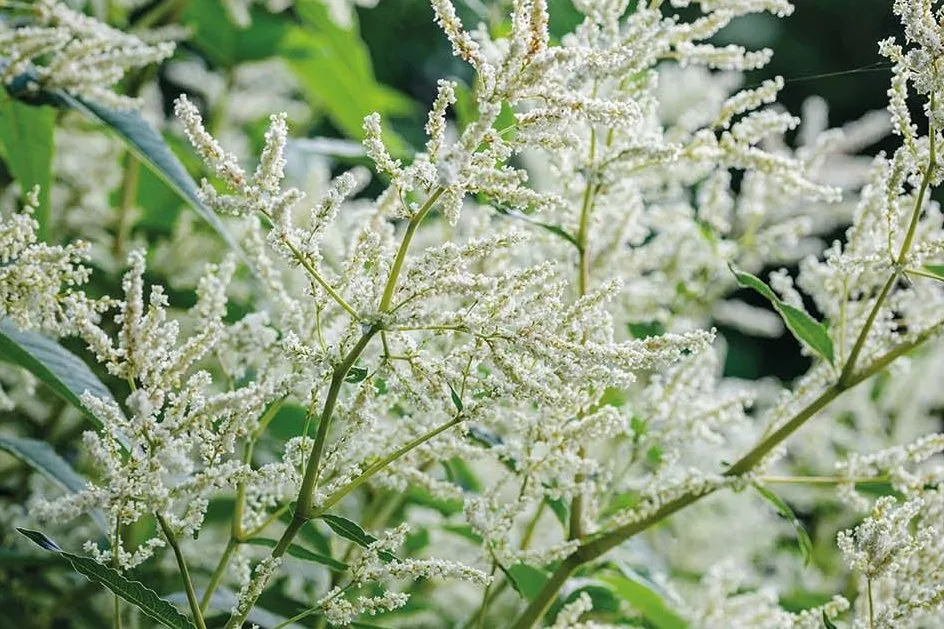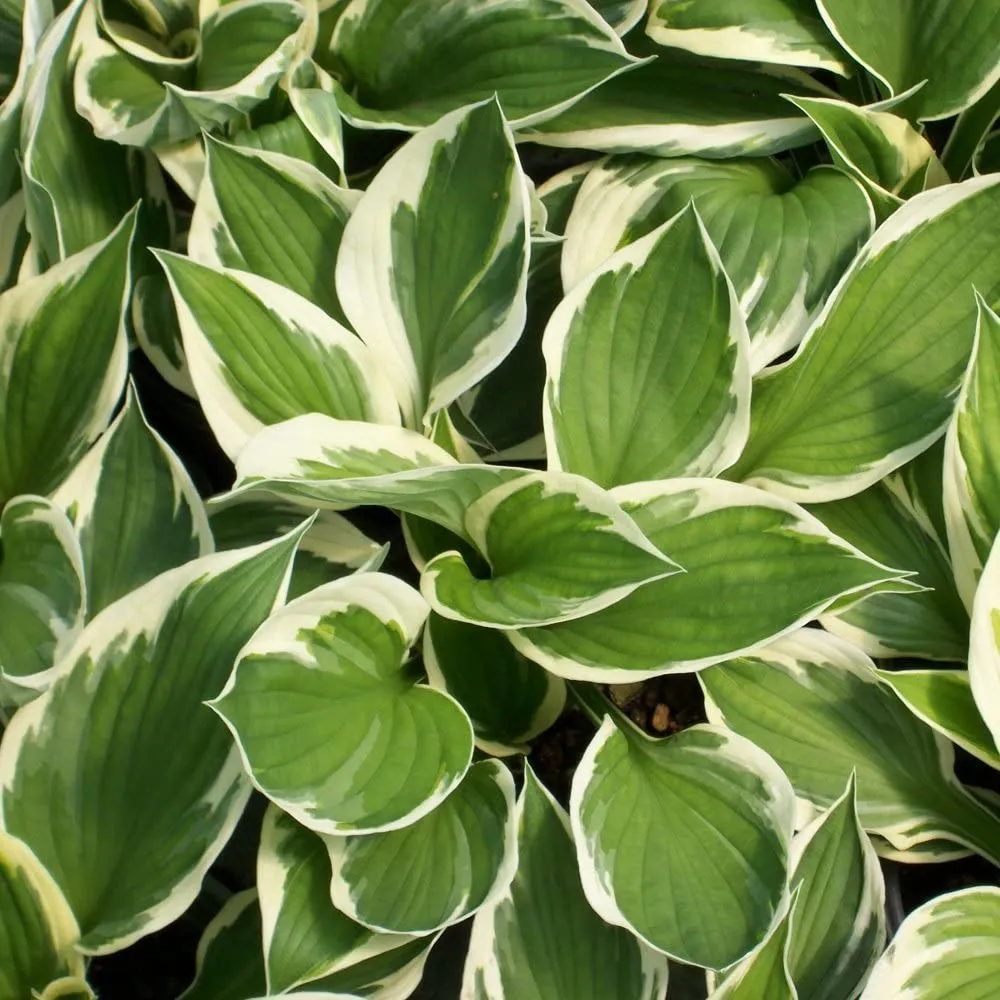The best shade loving plants for the garden including picks from Chris Moss' garden design in rural West Sussex
A shady spot in the garden is an opportunity to create something special, a tranquil retreat to retire to on hot, summer days.
Plants typically suited to shade will often be early to flower, but will continue the season with foliage that has a lush appearance. Chris' designs mix ferns with ornamental grasses and classic woodland perennials, with the aim of creating a shady tapestry of contrasting texture, shape and form. He prefers to be generous with his quantities of shady plants, creating rivers of single species that flow into one another.
“I like to layer the planting to create a shade understorey. This helps to cover the soil, offering protection, while adding interest.” By way of example, he indicates a Vinca minor that gently scrambles among some shade-loving hellebores, a less vigorous species than Vinca major and better behaved in a shady, woodland setting. Plant selection is key to success with shade in the garden and ongoing pruning of the canopy above and around the site is essential.
As the planting matures, canopies will require lifting and thinning (usually best completed in winter) to prevent light levels from becoming too low. In dry but shady areas, the use of organic mulch will help, although additional irrigation may be required during any prolonged hot weather.
Best plants for shade
Shade loving plants chosen by Chris Moss
Dryopteris affinis

Dryopteris affinis, also known as a golden male fern is a perennial garden fern with dramatic foliage. These ferns prefer a moist, shady site, making them one of the best plants for shaded areas in the garden. It is a robust plant that forms rosettes of fine arching fronds in shuttlecock-like clusters. The fronds are bright green when they appear in spring which contrasts well with the brown midribs. The colour matures to a rich green later in the season and can sometimes last through winter. Dryopteris affinis has an RHS Award of Garden Merit and grows to approximately 1.2 metres.
Astrantia major ‘Alba’
SQUIRREL_TEXT_13181885

Astrantias are some of the best flowering plants for shade. They are herbaceous perennials and tolerate a wide range of soils and have nectar and pollen rich flowers that attract a range of pollinators including bees, butterflies and moths from May to September. The branching stems bare a profusion of delicate pincushion flowers that are pale greenish white in colour and palmately divided leaves in a medium-dark green. Although they can be grown in full sun, Astrantias dislike drying out and are perfectly suited to a shady spot in the garden. Astrantia major 'Alba' grows to approximately 70cm.
SQUIRREL_13181885
Persicaria alpina
- Buy now from Burncoose Nurseries (£12.50).

Persicaria alpina is one of the best plants for shade. It is a deciduous perennial plant of great stature and endurance. It has large, oval leaves arch from central stems and tiny, soft-white flowers that turn rich pink as summer progresses. They like heavy, rich soil in sun or part shade and prefer to be kept moist. They have an RHS Award of Garden Merit can grow to up to 2.5 metres.
Rodgersia ‘Herkules’

Rodgersia 'Herkules' is a strong-growing, rhizomatous perennial with large, attractive palmate leaves tinted copper when young. The plant has panicles of tiny, pink, star-shaped flowers in summer emerging from dark pink buds. These plants prefer moist soil in part shade to full sun and grow to approximately 1 metre.
Geranium 'Rozanne' (= ‘Gerwat’)
SQUIRREL_TEXT_13181883

Geranium 'Rozanne' is a clump-forming herbaceous perennial with violet-blue flowers from late spring to autumn among soft, palmate leaves. It prefers a rich, free-draining soil in full sun to part shade. 'Rozanne' has an RHS Award of Garden Merit and grows to approximately 60cm.
SQUIRREL_13181883
Gillenia trifoliata
SQUIRREL_TEXT_13181888

Gillenia trfoliata is a demure, rhizomatous perennial plant with delicate, three-lobed leaves on thin, reddish stems. Sprays of white, star-shaped flowers, with contrasting reddish calyces, appear from late spring to summer. This plant likes rich, free-draining soil in part shade to light sun. It has an RHS Award of Garden Merit and grows to approximately 80cm.
SQUIRREL_13181888
Geranium phaeum ‘Album’
- Buy now from Claire Austin Hardy Plants (£6.50)

Geranium phaeum 'Album' is a clump-forming, upright woodland plant. It has mid-green, palmate leaves from spring to autumn, with small, white flowers on thin stems. They will grow in any reasonable soil with some organic matter, in sun and shade and can grow to approximately 1.2 metes.
SQUIRREL_13181890
Hakonechloa macra
SQUIRREL_TEXT_13181891

Hakonechloa macra or Japanese forest grass is a deciduous, perennial grass with emerald-green leaves and fine flower panicles from late summer, followed by golden hues in autumn. It will grow in any soil but the driest, in light shade to full sun. It has an RHS Award of Garden Merit and grows to approximately 40 centimetres.
SQUIRREL_13181891
Discover more about Chris Moss' garden design here.
Best shrubs for shade
Hydrangea macrophylla 'Early Pink'
SQUIRREL_TEXT_13181894

Hydrangeas are one of the best shrubs for shade. This variety has deep pink flowers that will bloom from early summer, much sooner than many other varieties. On acidic soils these blooms will become more mauve. The fresh green foliage will provide some nice autumn colours. Hydrangea macrophylla prefer a moist soil and are happy in a sunny or semi-shaded spot. They are fully hardy and will grow up to 1.2 metres.
SQUIRREL_13181894
Pieris japonica 'Mountain Fire'

Pieris make a great choice of shrub for light shade. Pieris japonica 'Mountain Fire' is evergreen and hardy. The young leaves emerge red and turn coppery-green then dark green as they mature. They also have small, bell shaped white flowers in mid spring. Pieris like a moist soil and are happy in full sun to partial shade. 'Mountain Fire' is a medium-sized shrub that can grow up to 4 metres over many years.
Sarcococca confusa
SQUIRREL_TEXT_13181896

As well as providing winter interest, Sarcococca confusa, or sweet box, is one of the best plants for shade. This bushy evergreen shrub has glossy deep green leaves and in winter, vanilla-scented white flowers followed by black berries. Sweet box works well in a shady border or a woodland garden and grows to approximately 1.5 metres.
SQUIRREL_13181896
Skimmia japonica 'Rubella'
SQUIRREL_TEXT_13181897

Skimmias are a great choice of shrub for shade. 'Rubella' is a small and bushy evergreen shrub with dark green leaves. Red buds give these plants winter interest, which then open up to reveal white flowers with a nice fragrance in early spring. Skimmias like a moist and well-drained soil in partial shade and can grow to approximately 1.5 metres.
SQUIRREL_13181897
Best climbers for shade
Clematis armandii 'Apple Blossom'

Clematis armandii 'Apple Blossom' is a vigorous climber that will easily scramble over walls and fences. It has large, dark green leaves that are evergreen, making it perfect for screening and year-round interest. Although they like a position in full sun, they can tolerate partial shade as they like to be sheltered and have their roots in a more shaded position. The deep pink buds open up into creamy white flowers tinged with pink in early to mid-spring. They can grow up to 8 metres.
Hydrangea anomala subsp. petiolaris

This hydrangea is the best flowering shrub for shade as it can tolerate full shade. As it is self-clinging, it is perfect for climbing up north-facing walls and for adding interest to areas of the garden where you might be struggling to find things that thrive. The fresh green oval leaves turn yellow in autumn before falling and in summer there are displays of showy white flowers. These shrubs can grow up to 12 metres.
Hedera helix

Hedera helix or English ivy is a great shade loving climber. Tolerant of a range of conditions and really hardy, they're a very low-maintenance choice for a shaded spot in the garden. There are a range of varieties of ivy with differing leaf shapes and colours, so they can really add interest to the garden too. They can grow up to 12 metres.
Lonicera periclymenum ‘Serotina’
SQUIRREL_TEXT_13181898

Lonicera periclymenum 'Serotina' is a vigorous form of honeysuckle that is happy in full sun to partial shade. The flowers are a deep red on the outside and yellow within and are highly fragrant. These plants can grow from 4-8 metres.
SQUIRREL_13181898
The best perennials for shade
Hosta 'Minuteman'
SQUIRREL_TEXT_13181900

Hostas are always a popular choice for a shaded spot in the garden. Chosen for their striking foliage, they add interest to damp corners. 'Minuteman' is a large, clump-forming hosta that has heart-shaped dark green leaves with irregular creamy-white margins. from early to mid-summer it has spikes of small lavender flowers. They can grow to 1 metre.
SQUIRREL_13181900
Tricyrtis formosana 'Purple Beauty'
SQUIRREL_TEXT_13181901

Tricyrtis, also know as toad lilies, are one of the best shade loving perennial plants. Happy in full shade, they also flower in early autumn, helping to add a longer season of interest to a shade garden. 'Purple Beauty' has ovate, dark green leaves and the star-shaped flowers are white and heavily speckled with purple. They can grow to approximately 50 centimetres.
SQUIRREL_13181901
Epimedium × warleyense
SQUIRREL_TEXT_13181902

Epimediums make a great addition to any shade garden. Epimedium x warleyense enjoys a spot in partial shade with moist, well-drained soil. Each stem can produce up to 30 orange and yellow flowers in spring. They are semi-evergreen and are particularly useful as ground-cover plants.
SQUIRREL_13181902
Pulmonaria 'Blue Ensign'
SQUIRREL_TEXT_13181904

Pulmonaria are early-flowering perennials that often have decorative speckled leaves and are one of the best plants for shade. 'Blue Ensign' has plain leaves and bares clusters of rich violet-blue flowers in spring. It has an RHS Award of Garden Merit and grows to approximately 30 centimetres.
SQUIRREL_13181904
For more recommendations on plants for dry shade, you can read our piece about a private garden in Oxford.
